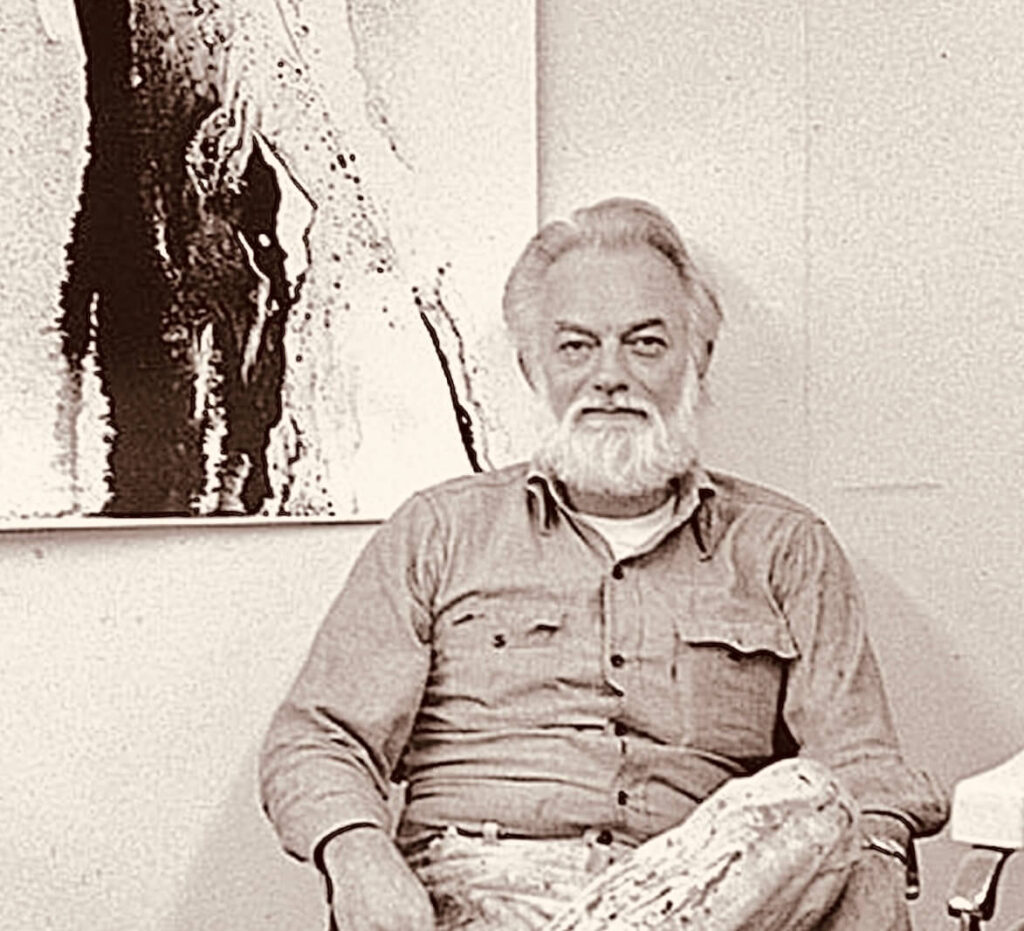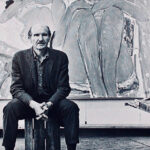Paul Jenkins
Paul Jenkins (1923-2012) was an influential American abstract expressionist painter known for his innovative use of color and fluid painting techniques. His dynamic, radiant works have left a lasting impression on the art world, showcasing his unique ability to blend color and form in a harmonious dance. This biography will delve into Jenkins’ life, career, and one of his most important artworks, “Phenomena Day of Zagorsk,” highlighting his significant contributions to modern art.

Early Life and Education
Paul Jenkins was born William Paul Jenkins on July 12, 1923, in Kansas City, Missouri. He faced a challenging childhood, losing his mother at a young age and being raised by his father and stepmother. Despite these hardships, Jenkins exhibited a strong interest in art from an early age, drawing inspiration from the vibrant colors and forms in nature.
After graduating from high school, Jenkins enlisted in the United States Maritime Service during World War II. Following his service, he moved to New York City in 1948 to pursue a career in art. He enrolled at the Art Students League of New York, where he studied under the guidance of influential painters such as Yasuo Kuniyoshi and Morris Kantor. The city’s vibrant art scene and his exposure to diverse artistic influences profoundly impacted Jenkins’ developing style.
Early Career and Artistic Development
During his time at the Art Students League, Jenkins became acquainted with the works of Abstract Expressionists such as Jackson Pollock, Mark Rothko, and Willem de Kooning. These encounters significantly influenced his artistic direction, steering him towards abstraction and the exploration of color and form.
In the early 1950s, Jenkins traveled to Europe, where he immersed himself in the rich cultural and artistic heritage of Paris. He attended the Académie Julian and became part of the burgeoning post-war art scene. Jenkins’ time in Paris was pivotal in his development as an artist, allowing him to experiment with new techniques and materials.
Signature Technique: Controlled Accidents
One of the defining characteristics of Jenkins’ work is his innovative technique of “controlled accidents.” This method involved pouring and manipulating paint directly onto the canvas, allowing the colors to flow and intermingle naturally. Jenkins used various tools, including knives and squeegees, to guide the paint, creating intricate, fluid compositions.
This technique enabled Jenkins to achieve a sense of spontaneity and organic movement in his works. The resulting paintings are characterized by their vibrant, luminous colors and dynamic forms, which seem to emerge and evolve organically. Jenkins’ mastery of this technique set him apart from his contemporaries, establishing his unique voice within the abstract expressionist movement.
Phenomena Series and International Recognition
In the late 1950s, Jenkins began his renowned “Phenomena” series, which would become the hallmark of his career. These works explore the interplay of light, color, and form, capturing the ephemeral beauty of natural phenomena. The series reflects Jenkins’ fascination with mysticism, alchemy, and the spiritual dimensions of art.
One of the most significant pieces from this series is “Phenomena Day of Zagorsk” (1963), which exemplifies Jenkins’ mastery of color and fluidity.
“Phenomena Day of Zagorsk” (1963)
“Phenomena Day of Zagorsk” is a large-scale painting that embodies the essence of Jenkins’ controlled accidents technique. The work features a mesmerizing interplay of colors, with vibrant blues, reds, yellows, and greens flowing seamlessly across the canvas. The colors appear to move and shift, creating a sense of depth and movement that draws the viewer into the painting.
The composition is both spontaneous and deliberate, with each color transition carefully guided by Jenkins’ hand. The painting’s fluid forms and radiant colors evoke a sense of natural beauty and cosmic energy, reflecting Jenkins’ belief in the spiritual power of art. “Phenomena Day of Zagorsk” is a testament to Jenkins’ ability to capture the ephemeral qualities of light and color, transforming them into a dynamic, living composition.
Continued Innovation and Influence
Throughout the 1960s and 1970s, Jenkins continued to refine his technique and expand his artistic repertoire. He experimented with different materials, including acrylics and mixed media, incorporating them into his works to create new visual effects. Jenkins’ paintings from this period are characterized by their increased complexity and depth, as well as their exploration of new textures and forms.
Jenkins’ work received international acclaim during this time, with exhibitions in major museums and galleries around the world. He was invited to participate in important group shows, including the Venice Biennale in 1964, where his work was widely praised. Jenkins’ ability to bridge the gap between abstraction and representation, and his exploration of the spiritual dimensions of art, resonated with audiences and critics alike.
Personal Life and Philosophy
Paul Jenkins’ personal life was deeply intertwined with his artistic practice. He was known for his introspective nature and his deep commitment to exploring the mysteries of existence through his work. Jenkins’ interest in mysticism, alchemy, and various religious and philosophical traditions informed his artistic vision and provided a rich source of inspiration.
Jenkins viewed his paintings as a form of meditation, a way to connect with the deeper dimensions of reality. He believed that art could transcend cultural and linguistic barriers, conveying universal truths through abstract forms. This approach is evident in the contemplative quality of his work, which often evokes a sense of quiet introspection and spiritual reflection.
Legacy and Influence
Paul Jenkins’ legacy as an artist lies in his ability to create a unique visual language that bridges diverse cultural and artistic traditions. His innovative use of color and fluid painting techniques has left a lasting impact on modern art, influencing generations of artists and viewers.
Jenkins’ works are included in the collections of major museums and galleries around the world, including the Museum of Modern Art in New York, the Smithsonian American Art Museum in Washington, D.C., and the Tate Gallery in London. His contributions to abstract art and his exploration of the spiritual dimensions of painting continue to be celebrated through exhibitions and retrospectives.
Since his death on June 9, 2012, Jenkins’ work has continued to inspire new generations of artists and viewers. His ability to convey profound spiritual themes through abstract forms remains a testament to his talent and vision. Jenkins’ legacy as a pioneer of abstract expressionism and a master of color and fluidity ensures that his work will continue to resonate with audiences for years to come.
Conclusion
Paul Jenkins’ artistic journey is a testament to his creativity, resilience, and profound understanding of color and form. Through his innovative controlled accidents technique, he created a body of work that continues to inspire and challenge viewers. “Phenomena Day of Zagorsk,” one of his most important works, exemplifies his ability to convey complex ideas and emotions through abstract forms and dynamic compositions. Jenkins’ legacy as a painter is a reminder of the transformative power of art and the enduring impact of creative vision.



